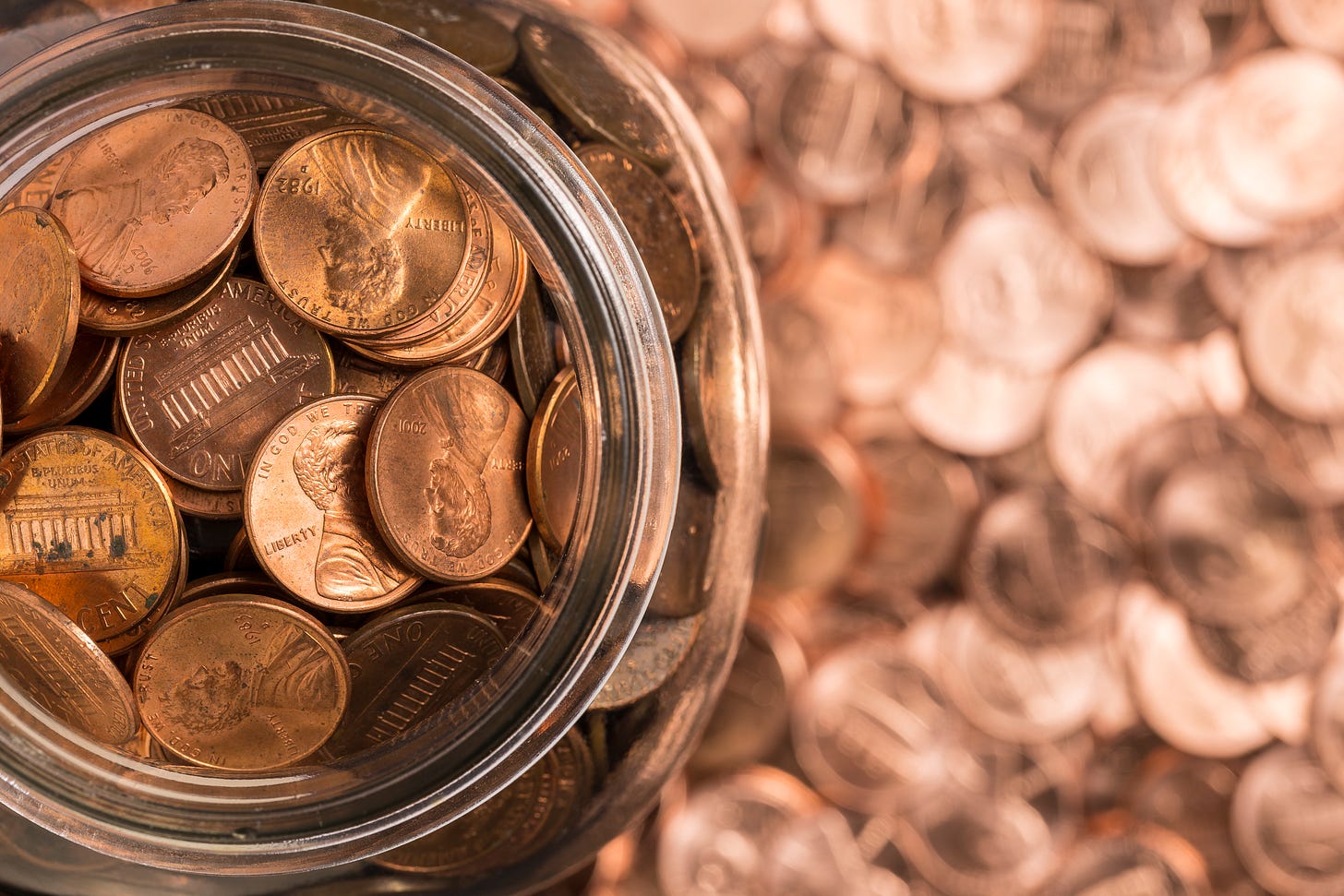Do you remember
that sudden spike in gasoline prices right after Russia invaded Ukraine?
or when you were baking and the price of eggs exploded?
or maybe, like me, you’re a pet owner and saw the prices of cat food, treats, and litter rise and stick?
My husband used to tell people that if a number didn’t have at least nine (9) zeros after it, I couldn’t understand it. A billion here, a billion there, pretty soon it adds up to real money. But these days, it isn’t the billions that bother (most of) us, it’s the pennies.
Those pennies become dollars and those dollars add up. Especially when the amount you need to pay for goods and services is rising quickly. That is not stability. The uncertainty that comes from instability makes us anxious and worried.
What we saw was high inflation.
High inflation
I used to tell my students that they would never see the kind of inflation I saw in the late 1970s and early 1980s. During that time, inflation peaked at 14.8 percent in March 1980. The rate fell to 2.5 percent briefly three years later and then grew again. The Bureau of Labor Statistics (BLS) measures inflation rates by looking at changes in prices from one year to the next.
At that time, we also saw unemployment rise to 10.8 percent in November 1982 and didn’t get back below 5.5 percent until 1996.
This time inflation peaked at 9.2 percent in June 2022 and fell to 3.1 percent within 16 months. And, except for a brief increase in unemployment to 14.3 percent during the pandemic lockdowns, unemployment has stayed below 4 percent. In a later post I’ll talk about the labor market.
The slight increase in the inflation rate for December reflects stubbornly high inflation in the shelter market. With over a million new housing units scheduled to open between 2024 and 2025, according to Veronica Grecu reporting for RentCafe, rental prices should stabilize. If fewer renters want houses, then the demand for houses may also fall, easing prices in that market as well. That will depend a lot on interest rates, too.
The Federal Reserve (the Fed) has targets for these numbers. The target for the inflation rate is around 2 percent per year and the target for the unemployment rate is around 4.5-5.5 percent. That target unemployment rate may be falling, according to the January 4, 2024 Marketplace.org report, as the nature of work has shifted.
Why those targets?
These are the targets that represent a stable economy. What is a stable economy?
Paraphrasing the Wall Street Journal, a stable economy has the resources to grow so that citizens enjoy improved living standards, without major swings in unemployment or inflation. I’d add, given our global economy, a stable economy has reliable relationships with our trading partners. In the US those partners include Mexico, Canada, China, the EU, and ASEAN. [1]
There’s a lot to unpack there: resources, growth, unemployment, inflation, stable trade.
Since a stable economy is important, I’ll be focusing on the factors of stability throughout the year. For the next few weeks, my focus is on inflation.
What is inflation? Inflation is a general rise in prices. Many people use the phrase “too much money chasing too few goods” to describe what causes inflation.
Every other week, I’ll post pieces that will help you better understand inflation. Here’s the line-up:
What inflation does to us
What causes inflation
How the BLS computes inflation and who the players are
How we combat inflation
And why the Secretary of the Treasury did a victory lap
And, as the Bureau of Labor Statistics (BLS) publishes the monthly data on inflation, I’ll take a few minutes to explain what the numbers mean.
You’ve seen inflation at work as prices rose after the pandemic.
And you’re now seeing the impact of the process to combat inflation—rising interest rates and declining price increases (disinflation). You may have even seen some prices fall (deflation).
I need your help. If you find something confusing, let me know. If you need an example or have one, let me know. Thank you for taking the time to read this. I hope you’ll stick with me for the next few weeks.
This is part one of my Crash Course on Inflation.
Thank you for reading,
Nikki
This series is now complete. Check my Table of Contents for a “read-order” list of posts under Crash Course on Inflation.
[1] ASEAN is the Association of Southeast Asian Nations.




